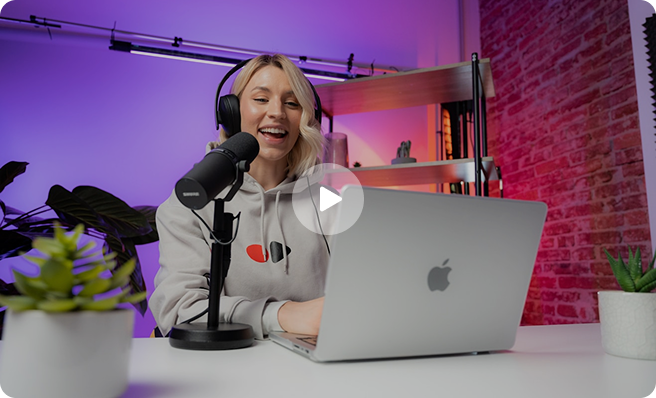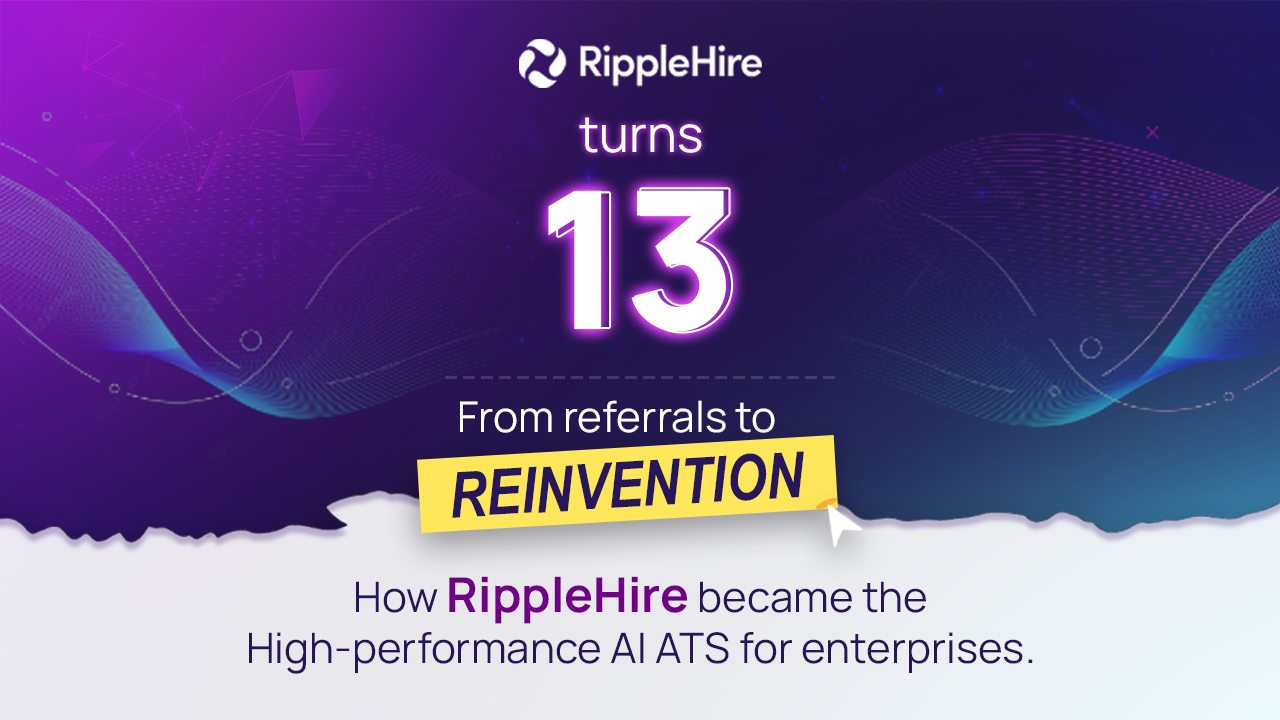The future of hiring drives: virtual, hybrid, or in-person?
Hiring drives have come a long way from the days of crowded halls and paper resumes. Today, talent teams have more choices than ever — from fully virtual assessments to high-energy in-person drives and hybrid models that blend both. The question is no longer can we go digital, but should we, and when?
Each format brings its own strengths. Virtual drives deliver reach and speed. In-person events build connection and trust. Hybrid drives promise flexibility but demand sharper coordination. For talent leaders, the challenge now is balancing efficiency, experience, and authenticity in the same process.
As hiring scales up again and technology gets smarter, the future of hiring drives isn’t about picking one format. It’s about designing a model that fits how your organization works and how candidates want to engage.
How hiring drives have evolved and why choosing the right format now matters
A few years ago, hiring drives followed one template: show up on campus, meet hundreds of students, and fill roles in a few days. It was simple, predictable, and largely offline. Then digital tools changed everything — candidate sourcing, assessments, interviews, and even onboarding went online. What started as a temporary solution has now become a permanent part of how enterprises hire.
Today, talent teams have real choices. You can run a fully virtual drive that reaches 10 campuses in one day, host a hybrid model that blends digital screening with in-person interviews, or return to on-ground drives that focus on building relationships face-to-face. Each option works, but not for the same reason or for every role.
Choosing the right format now depends on factors like:
- The type of talent you’re hiring,
- The speed and scale you need,
- The brand experience you want to create, and
- The resources your team can manage.
The next section explores how to decide which format makes the most sense for your business, and what trade-offs you need to consider before your next drive.
Virtual vs. Hybrid vs. In-person: how to choose what really works for you
There’s no single “best” way to run hiring drives. The right format depends on your goals, your audience, and how you balance efficiency with experience. Here’s how to think about each one.
1. Virtual drives: when speed and reach matter most
Virtual hiring drives make it possible to engage thousands of candidates across geographies without travel or venue costs. They work best when your focus is on volume hiring or early screening.
When to use it:
- You’re hiring across multiple cities or countries.
- You need faster shortlisting for large entry-level roles.
- Your recruiters are managing tight timelines or limited budgets.
Virtual formats also help you collect data easily — from attendance to assessment scores — making post-drive analysis simple. The trade-off is a lower personal connection, so you’ll need strong communication and engagement tools to keep candidates interested through the process.
2. In-person drives: when connection and culture matter
There’s still something powerful about being face-to-face. In-person drives build emotional connection and allow hiring managers to read soft skills that don’t always show up in assessments. They work best for high-touch hiring — leadership roles, client-facing positions, or when employer branding is a key goal.
When to use it:
- You want to strengthen campus relationships and brand recall.
- You’re evaluating behavioral fit or communication-heavy roles.
- You want candidates to experience your culture firsthand.
In-person drives take more planning and cost more to run, but they often lead to stronger candidate loyalty and fewer drop-offs post-offer.
3. Hybrid drives: when you need both scale and depth
Hybrid hiring drives combine the best of both worlds. You can screen candidates virtually to save time and resources, then invite shortlisted talent for in-person interviews or final assessments. It’s an ideal approach for enterprises balancing high volume with quality evaluation.
When to use it:
- You’re hiring for diverse roles that need different levels of evaluation.
- You want to reduce logistical load while keeping a personal touch.
- You manage hiring across multiple business units or geographies.
Hybrid models require good coordination and clear ownership between virtual and physical teams. With the right automation tools, they can cut time-to-hire dramatically while keeping the human element intact.
Metrics to track for each hiring drive format
Each model brings different strengths, so the metrics you track should reflect that. When you know what to measure, you can decide what to scale, optimize, or retire.
For virtual drives
Track participation and conversion at every stage — how many registered, attended, and completed assessments. Low completion rates often signal tech friction or weak candidate communication. Also, monitor time-to-shortlist and assessment accuracy to see if hiring automation is improving decision speed without hurting quality.
For in-person drives
Focus on the offer-to-join ratio and candidate experience scores. In-person events are resource-intensive, so you want to see clear returns through stronger acceptance and retention rates. Track interview-panel utilization (how many interviews actually happened versus scheduled) to identify process bottlenecks.
For hybrid drives
Measure efficiency gains across stages. Compare the time saved between virtual screening and on-ground interviews. Look at the panel feedback turnaround time and candidate drop-off between rounds. These metrics show whether your hybrid setup truly combines the best of both worlds or just adds complexity.
When you track these numbers consistently, you stop debating formats based on perception and start making decisions based on data. Over time, this clarity helps your team design hiring drives that are not just faster but smarter.
Building future-ready hiring drives with RippleHire
No matter which format you choose — virtual, hybrid, or in-person — success comes down to one thing: how well you connect people, processes, and data. That’s where RippleHire helps enterprises stay ahead.
RippleHire’s AI-powered ATS makes it easy to run hiring drives of any size or format. You can shortlist faster with automated screening, schedule interviews across time zones, and track candidate progress in real time — all from a single dashboard. Whether your recruiters are on campus, online, or managing both, everyone works off the same live system.
Book a demo today to see how you can simplify every hiring drive and deliver a world-class candidate experience with RippleHire.
FAQs
FAQs
What is the difference between virtual, hybrid, and in-person hiring drives?
A virtual drive happens completely online through video interviews and digital assessments. An in-person drive takes place on campus or at a venue where candidates and recruiters meet face-to-face.
A hybrid drive mixes both — online screening first, followed by in-person interviews for shortlisted candidates. Each format has its own benefits depending on your hiring goals.
Which hiring drive format is best for large-scale recruitment?
Virtual hiring drives work best when you need to reach many candidates quickly across different locations. They reduce travel costs, save time, and allow easy data tracking. However, you need strong digital tools and clear communication to keep candidates engaged throughout the process.
Why are in-person hiring drives still relevant today?
In-person drives help build personal connections that online methods can’t fully replace. Recruiters and hiring managers can better assess communication skills, confidence, and cultural fit. They’re ideal for leadership, client-facing, or brand-building roles where human interaction matters most.
How do hybrid hiring drives work?
Hybrid drives start online — candidates register, take assessments, and go through early screening virtually. Shortlisted candidates are then invited for face-to-face interviews. This approach balances scale and depth: it saves time on logistics but keeps the personal touch where it counts.
What are the pros and cons of virtual hiring drives?
The biggest advantages are speed, reach, and cost savings. You can connect with multiple campuses or cities at once. The main drawbacks are less personal connection and higher risk of tech issues. A good communication plan and reliable hiring platform help overcome these challenges.
What metrics should companies track for each drive format?
For virtual drives, track participation, completion rates, and time-to-shortlist. For in-person drives, focus on offer-to-join ratio and candidate experience.
For hybrid drives, measure efficiency gains — time saved, panel feedback speed, and drop-offs between virtual and physical stages. These numbers show what’s working and what needs improvement.
How can technology improve the future of hiring drives?
Technology helps you manage drives of any size or format from one system. Tools like RippleHire automate shortlisting, scheduling, and communication, giving recruiters real-time visibility. Whether your team is online, on campus, or running both, tech ensures the process stays consistent, efficient, and candidate-friendly.















